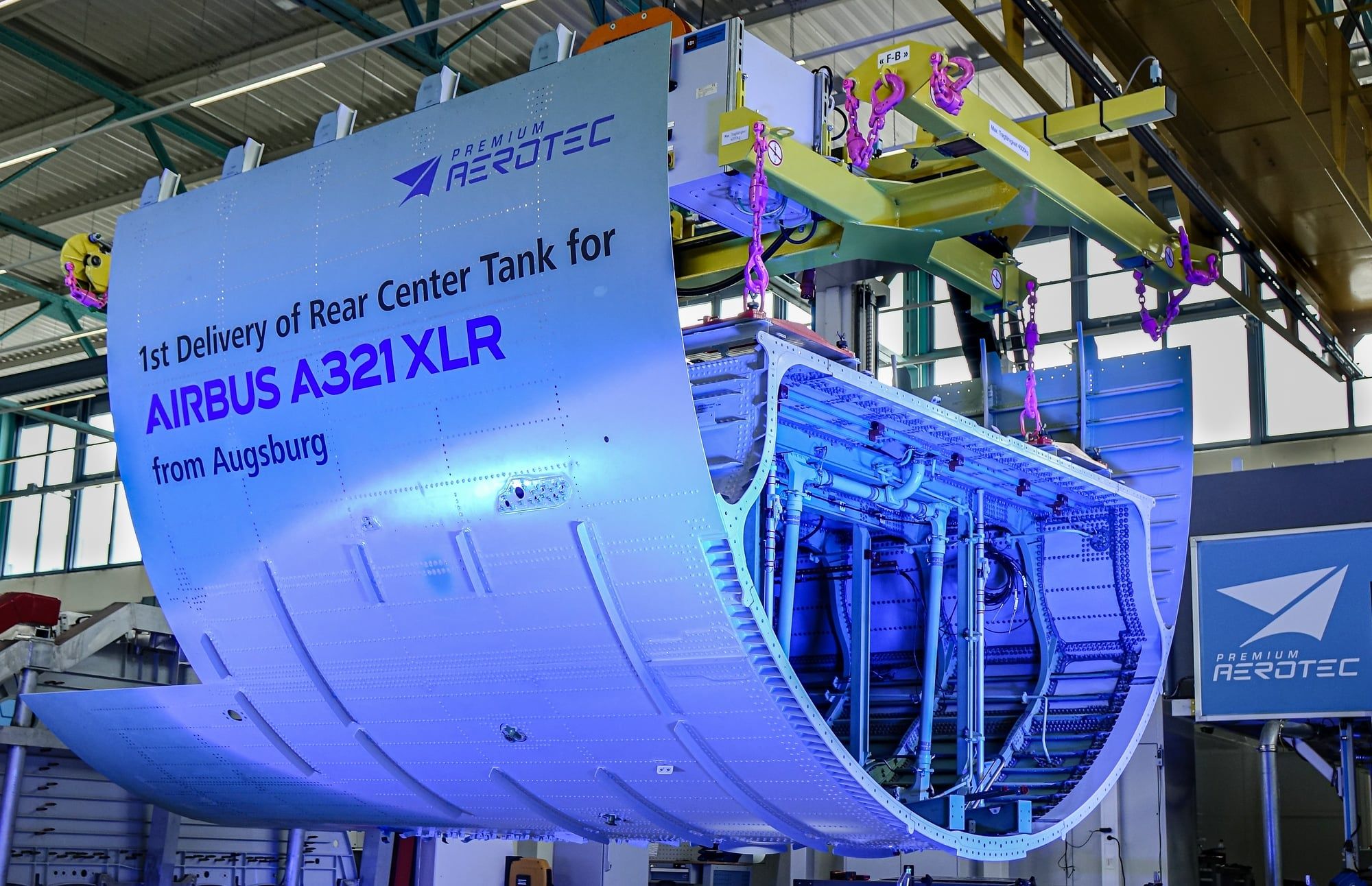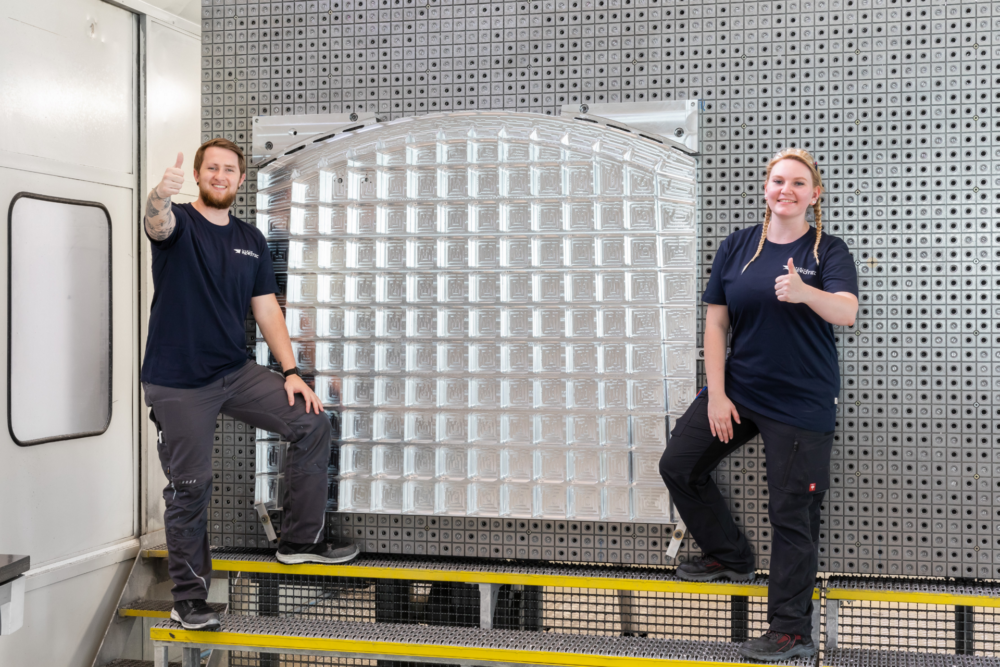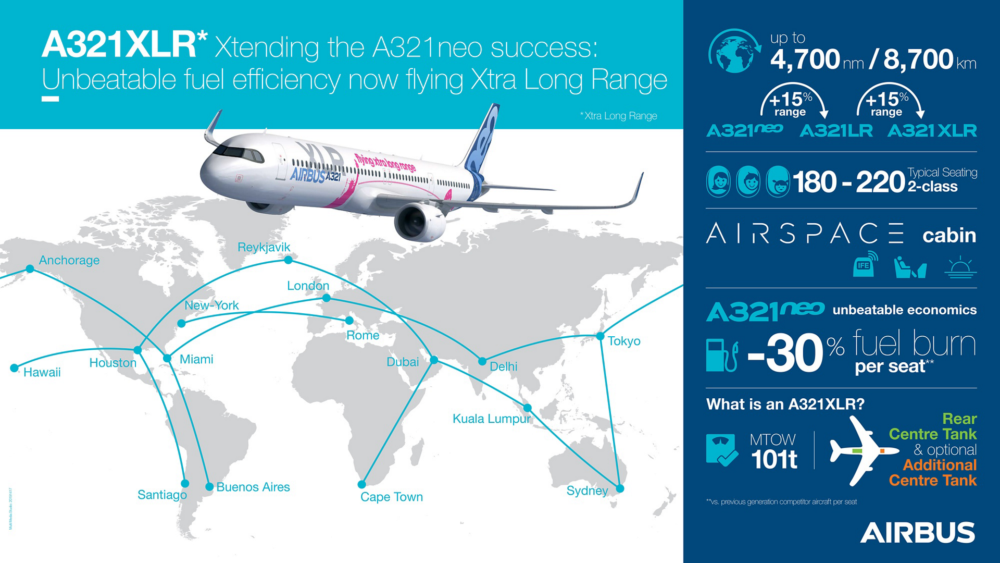The first rear center tank for the A321XLR has been completed and handed over by Premium Aerotec. The new tank provides the additional fuel capacity required to send the XLR to the longest of ranges, and is at the heart of the new Airbus aircraft.
First RCT is complete
The rear center tank, or RCT, is a crucial element of the Airbus A321XLR, giving additional fuel capacity for the long-range narrowbody aircraft. Today, two and a half years after Premium Aerotec was commissioned to produce the RCT at its Augsburg factory, the unit is complete and has been handed over to Airbus.
Thomas Ehm, CEO of Premium Aerotec, commented on the handover in a virtual ceremony held today,
"With the handover of the first rear center tank, we are celebrating an important milestone in the A321XLR program today - thanks to a great performance by the entire team and the good cooperation with our customer Airbus.
"Today again proves that we are well prepared for the coming stages in this new aircraft program".
The ‘first metal cut’ for the RCT was made in June 2020, which marked a key milestone and the beginning of a 10-month process to complete the manufacture. Premium Aerotec has now completed the structure’s sub-assembly, structural assembly, systems equipping and testing, and has now handed the part over to Arbus’ major component assembly facility in Hamburg.
Premium Aerotec was a top choice of provider for this important structure, given not only its experience in aircraft construction, but also in its involvement in building Eurofighter fuselage sections which also feature an integral fuel tank.
An Airbus spokesperson highlighted the importance of this delivery in a statement to Simple Flying, saying,
"The handover of the first RCT is an important milestone because the RCT is one of the A321XLR essentials and therefore key for the success of the overall programme. It also demonstrates that Airbus is on track with the assemmbly of the major components for the XLR."
Stay informed: Sign up for our daily and weekly aviation news digests.
A critical part of the A321XLR
The RCT structure will be integrated into the fuselage at sections 15 and 17. This is behind the main landing gear bay. It will hold up to 12,900 liters of fuel, far more than several additional center tanks (ACTs) can hold in the A321LR, for example. Overall, the A321XLR will be capable of holding around 40,000 liters of fuel.
The way that the RCT has been designed means that it maximizes the available volume of the aircraft’s lower fuselage. It also takes up minimal space in the cargo hold, thereby allowing operators to continue to accommodate cargo and baggage beneath the cabin floor.
It’s a crucial part of engineering for the A321XLR, and will be instrumental in allowing the aircraft to reach unprecedented ranges of up to 4,700 NM.
The A321XLR is likely to have a number of special conditions imposed on it by EASA, in particular relating to the RCT. Airbus will need to meet several requirements regarding fire protection and passenger comfort, due to the location of the tank underneath the cabin floor.
Last month, Airbus completed the first A321XLR center wing box. At the end of March, it announced that it has been preparing major component and production lines for the XLR, gearing up to begin mass production of the type over the next couple of years. With all the activity ongoing, it seems Airbus is well on track for its projected 2023 entry into service of the type.



